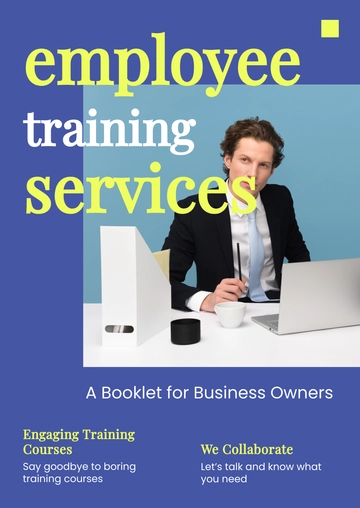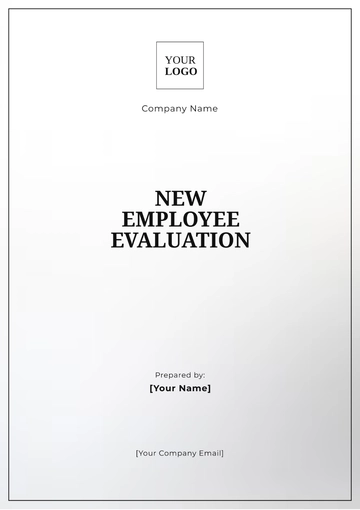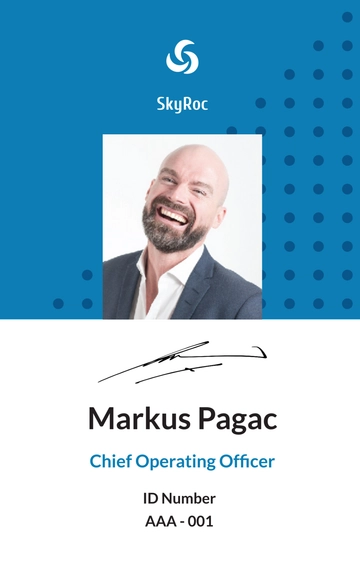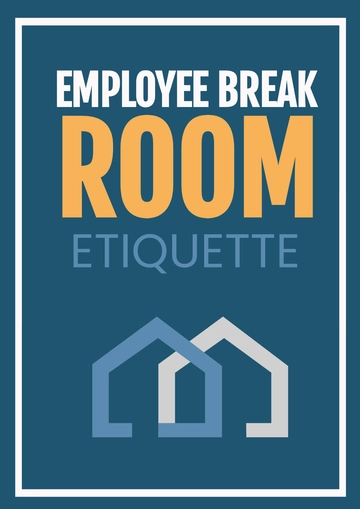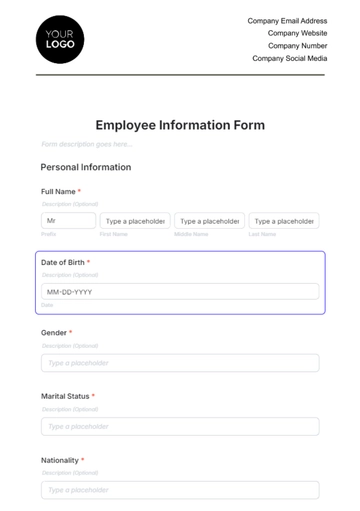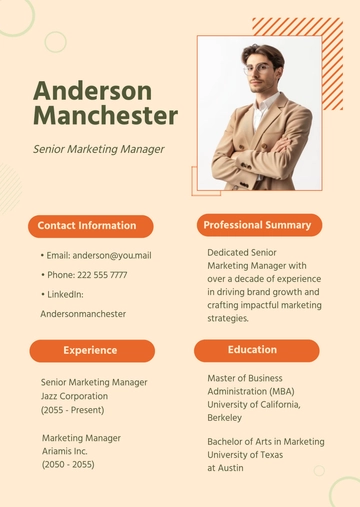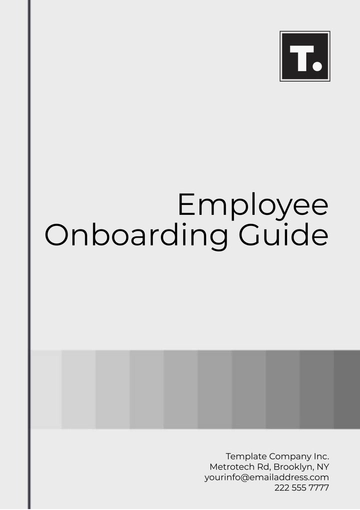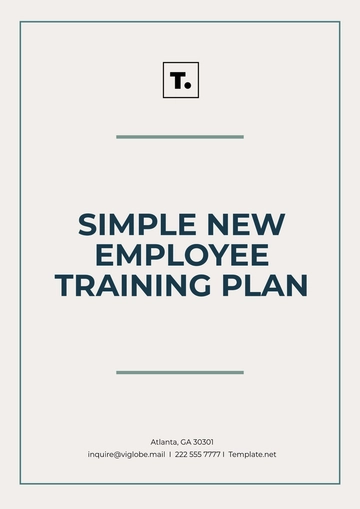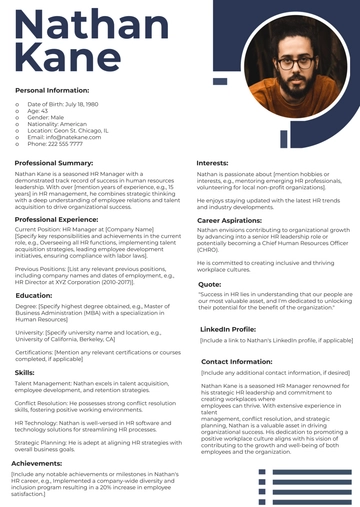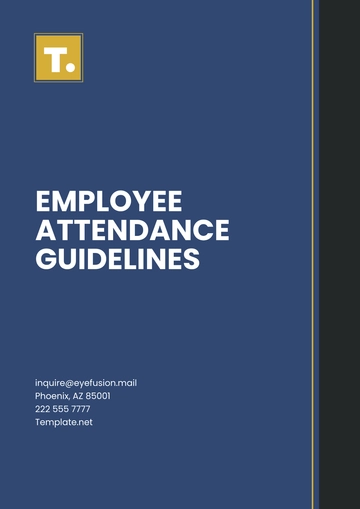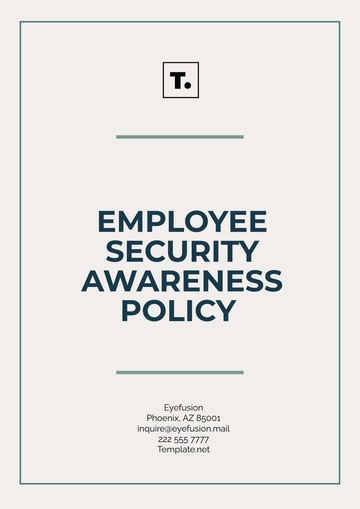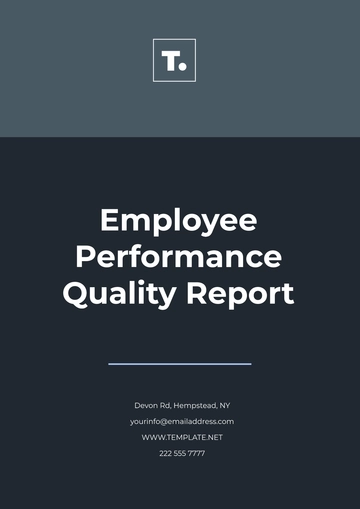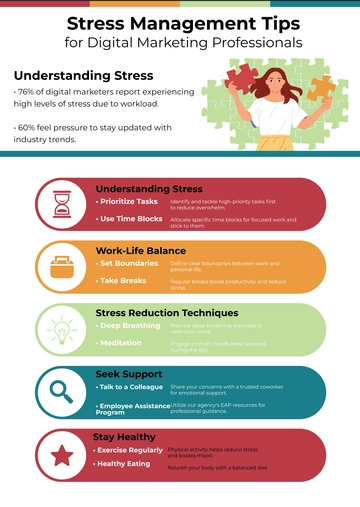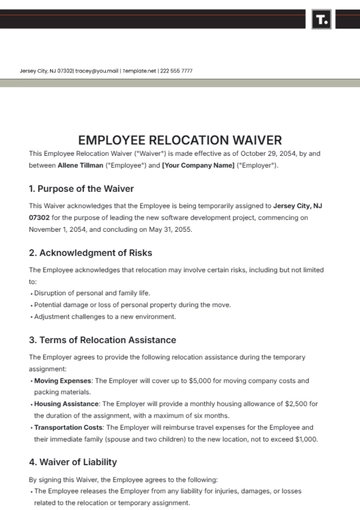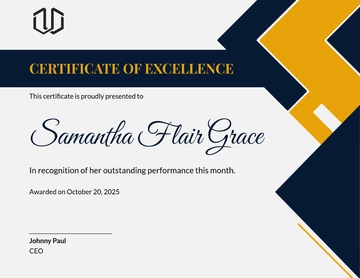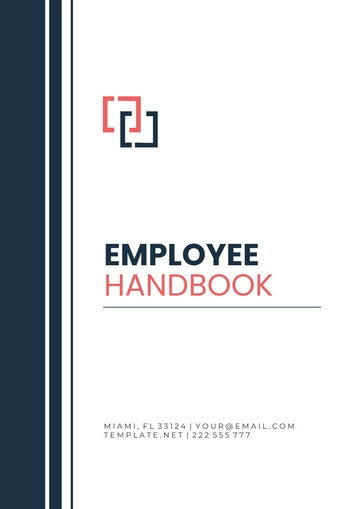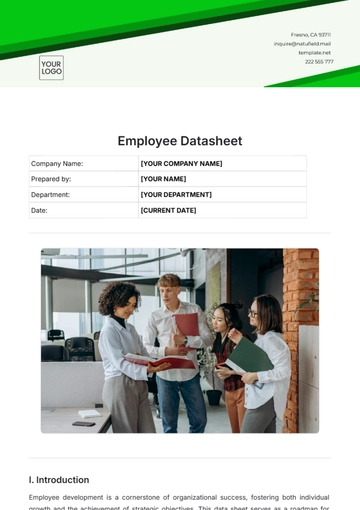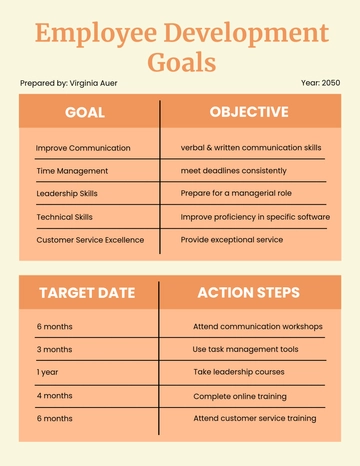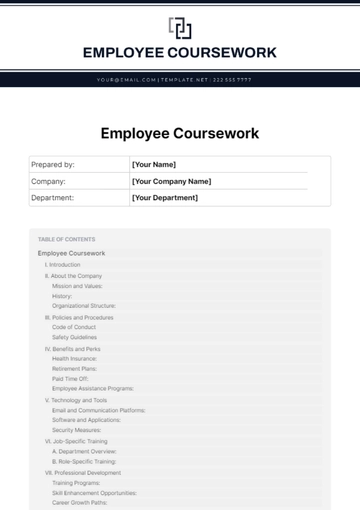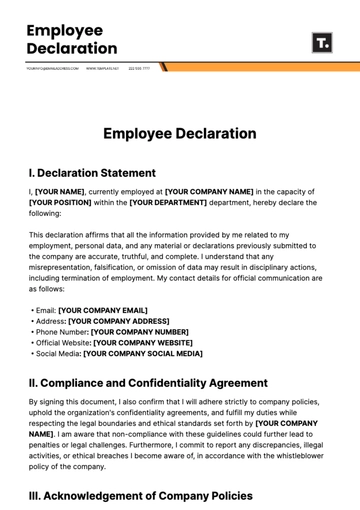Free Annual Employee Relationship Health Report HR
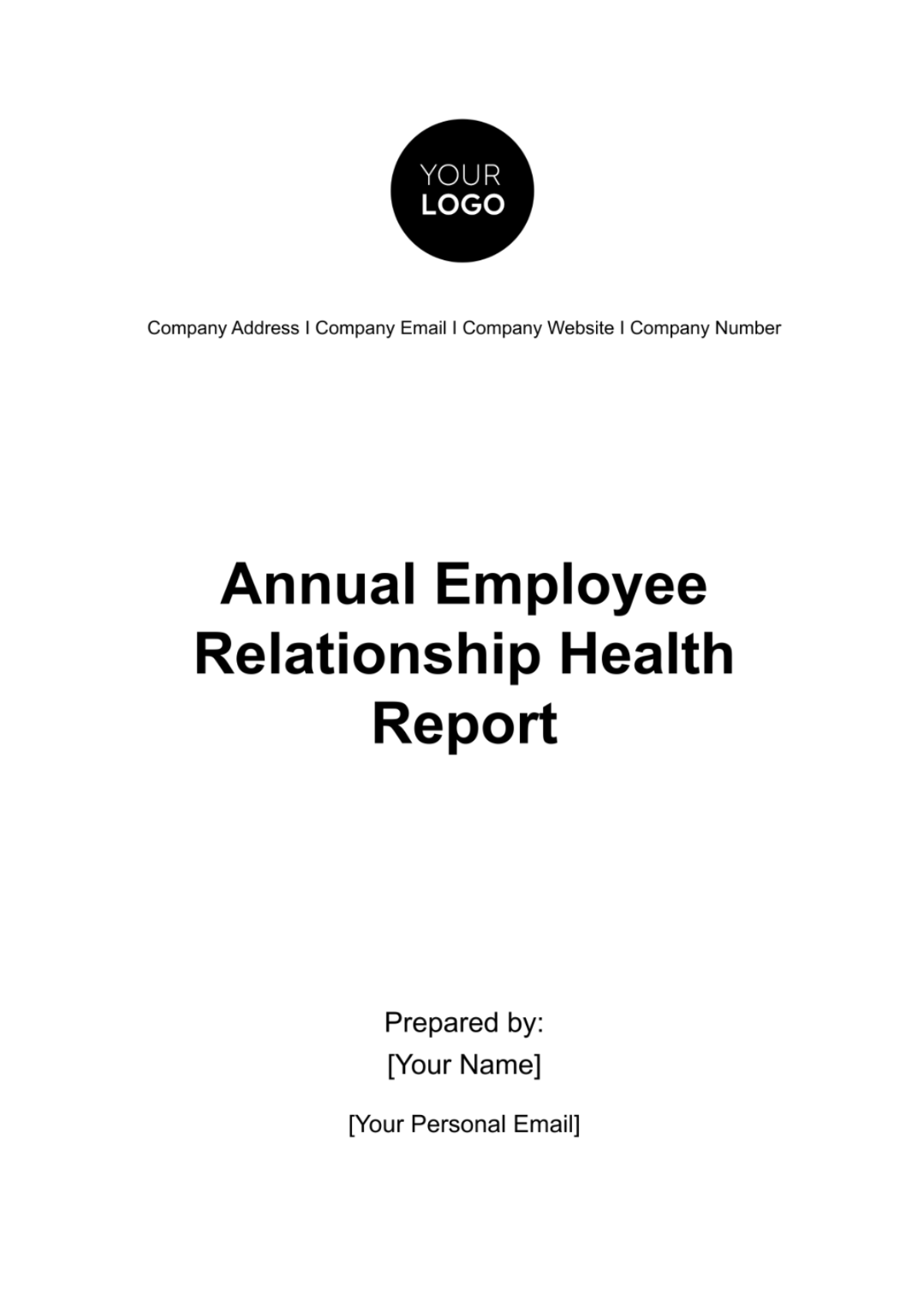
The Employee Relationship Health Report for the year [2053] represents a critical examination of the pulse of our organization's workforce dynamics. It has been meticulously crafted to unveil a comprehensive panorama of the intricate web of interpersonal relationships among our employees. This report delves deep into the heart of our organization, offering profound insights, discerning trends, and a rigorous analysis, all aimed at illuminating the intricate tapestry of employee relationships and satisfaction levels.
METHODOLOGY
The foundation of this report is built upon the robust and transparent methodology employed in data collection. Throughout the year, we administered confidential surveys to our employees, fervently advocating for their unfiltered and candid perspectives. These surveys served as a beacon of truth, offering a candid window into the complex terrain of their experiences and relationships within the organization. The data collection process was as rigorous as it was anonymous, ensuring that the voices of our employees remained shielded while their sentiments found an unfiltered expression in the data.
KEY FINDINGS
Employee Satisfaction
In [2053], we conducted thorough surveys to assess employee satisfaction. The findings reveal that 84% of employees reported being content with their overall experience at the company, while 12% felt neutral, and 4% expressed some level of dissatisfaction. Chart 1, the Employee Satisfaction Chart, visually represents these findings, with the X-Axis illustrating the different satisfaction levels (Satisfied, Neutral, Dissatisfied) and the Y-Axis depicting the corresponding percentage of employees in each category. These results reflect a predominantly positive sentiment among our workforce, with a majority expressing satisfaction, while a smaller portion falls into the neutral or dissatisfied categories.
Manager-Employee Relationship
The quarterly trend chart demonstrates a consistent improvement in manager-employee relationships throughout the year [2053]. In Q1, 74% of employees reported positive relationships, which steadily increased to 81% by Q4. This upward trend indicates that our efforts to enhance these relationships have been successful.
The quarterly trend analysis shows a positive growth in manager-employee relationships over the past year. By continuing our efforts to foster positive relationships and addressing areas of concern, we can further enhance the overall employee relationship health within the organization.
Team Dynamics
The Team Dynamics chart shows that a substantial 81% of employees perceive their working relationships with team members as positive. Meanwhile, 10% indicate neutral dynamics, suggesting potential for improvement, and 9% experience challenging relationships. This data highlights the majority's positive team interactions, but also points to the need for addressing and enhancing neutrality and challenging dynamics within the teams.
Communication
The "Communication" section of the Annual Employee Relationship Health Report focuses on the effectiveness of communication within the organization. According to the survey findings, a significant majority, approximately 72% of employees, reported that they perceive communication within the organization as effective. This positive perception indicates that a substantial portion of the workforce feels that information is disseminated clearly and efficiently, fostering a sense of transparency and connection. Effective communication is crucial for aligning employees with organizational goals, sharing important updates, and creating a cohesive work environment.
On the other hand, the survey revealed that about 28% of employees believe there is room for improvement in communication. This subset of employees likely perceives certain gaps or challenges in the way information is conveyed or received within the organization. It is essential for the HR department and leadership to pay attention to the feedback provided by this group to identify specific areas where communication may be lacking or could be enhanced. Addressing these concerns can lead to a more inclusive and communicative workplace, ultimately improving overall employee satisfaction and organizational performance. The "Communication Effectiveness" chart visually represents this division, with the X-axis depicting the two categories: "Effective" and "Needs Improvement," allowing for a clear understanding of the sentiment among employees regarding communication within the organization.
Work-Life Balance
The "Work-Life Balance" section of the Employee Relationship Health Report reveals important insights into how our employees perceive their ability to balance their professional and personal lives. Notably, a significant majority, accounting for 68% of the workforce, reported feeling satisfied with their work-life balance. This is a positive indicator of our organization's commitment to promoting a healthy work-life equilibrium. However, it is essential to acknowledge that a quarter of our employees, precisely 25%, expressed a neutral stance on their work-life balance.
This suggests that while they may not be dissatisfied, there might be opportunities to further enhance the support and resources available to employees in managing their responsibilities inside and outside the workplace. Lastly, the report highlights that 7% of our employees are currently grappling with concerns about their ability to balance work and personal life. Addressing the needs of this minority is crucial to ensuring the overall well-being and job satisfaction of our workforce.
Career Development Opportunities
Throughout the previous year, our organization dedicated substantial efforts to elevate our career development initiatives, focusing on the enrichment of employee skill sets and the cultivation of professional growth. In the following overview, we delineate the progress achieved across each of the four quarters:
Quarter 1 (Q1):
In the initial quarter (Q1), we observed a commendable growth rate of 15% in our career development initiatives. This period marked the introduction of innovative online courses and workshops, specifically designed to augment the skills and knowledge of our workforce. These educational opportunities set a promising foundation for the year ahead.
Quarter 2 (Q2):
Quarter 2 brought remarkable strides, boasting an impressive 22% growth rate in our career development programs. During this period, we inaugurated a mentorship program that seamlessly connected seasoned senior employees with their junior counterparts. This initiative promoted the invaluable exchange of knowledge and experiences, fostering a stronger internal talent ecosystem.
Quarter 3 (Q3):
The momentum gained momentum in Quarter 3 (Q3), where we sustained our expansion efforts, achieving an 18% growth rate in our initiatives. At this juncture, we introduced personalized development plans tailored for each employee. This empowerment allowed our workforce to craft individualized career paths aligned with their unique aspirations and strengths.
Quarter 4 (Q4):
The year culminated on a high note, as Quarter 4 (Q4) witnessed a substantial 25% growth in our career development endeavors. During this quarter, we took a significant stride by launching a tuition reimbursement program, a crucial step in providing financial support to employees who wish to further their education and professional growth.
In summation, the consistent growth exhibited in our career development opportunities throughout the year underscores our unwavering dedication to nurturing the professional development of our employees. This commitment ensures that our workforce possesses the necessary tools and resources to advance within the organization, reflecting our steadfast focus on employee growth and contributing to the long-term success of our organization.
RECOMMENDATIONS
Conduct Regular Feedback and Improvement Sessions: | In response to the 16% of employees who expressed dissatisfaction, it is vital to initiate regular feedback and improvement sessions. These sessions should provide a platform for employees to voice their concerns, enabling proactive problem-solving and continuous improvement. Addressing employee feedback promptly is key to bolstering overall satisfaction and morale. |
Managerial Training and Resources: | To enhance manager-employee relationships and communication, invest in comprehensive managerial training programs. Equip our managers with the skills and resources necessary to foster positive working relationships, effective communication, and leadership excellence. These investments will yield long-term benefits by creating a supportive and engaged workforce. |
Recognize and Reward Team Excellence: | Acknowledge and reward teams that demonstrate exceptional working relationships. Implement a robust recognition program that celebrates teamwork, collaboration, and synergy within the organization. By doing so, we not only motivate teams to maintain their positive dynamics but also inspire others to follow suit. |
Strengthen Communication Initiatives: | Strengthen our communication initiatives by establishing clearer channels of communication and enhancing transparency. Implement tools and processes that facilitate open dialogue and information sharing across all levels of the organization. This will contribute to a more informed and engaged workforce, fostering trust and alignment with our company's mission and values. |
CONCLUSION
The organization's overall employee relationship health for the year [2050] is encouraging, with a significant majority of employees expressing satisfaction and reporting positive working relationships. Nevertheless, our analysis highlights the need for targeted improvements, primarily in the realms of manager-employee relationships and communication. By proactively addressing these areas, we are poised to create a workplace environment that is not only healthier but also more conducive to heightened productivity and sustained success.
- 100% Customizable, free editor
- Access 1 Million+ Templates, photo’s & graphics
- Download or share as a template
- Click and replace photos, graphics, text, backgrounds
- Resize, crop, AI write & more
- Access advanced editor
Elevate your HR practices with our Annual Employee Relationship Health Report HR Template. Streamline your workforce management by assessing employee satisfaction, engagement, and communication. This comprehensive template empowers you to make data-driven decisions, fostering a harmonious workplace culture that retains top talent and boosts productivity.
You may also like
- Employee Letter
- Employee ID Card
- Employee Checklist
- Employee Certificate
- Employee Report
- Employee Training Checklist
- Employee Agreement
- Employee Contract
- Employee Training Plan
- Employee Incident Report
- Employee Survey
- Employee of the Month Certificate
- Employee Development Plan
- Employee Action Plan
- Employee Roadmap
- Employee Poster
- Employee Form
- Employee Engagement Survey
